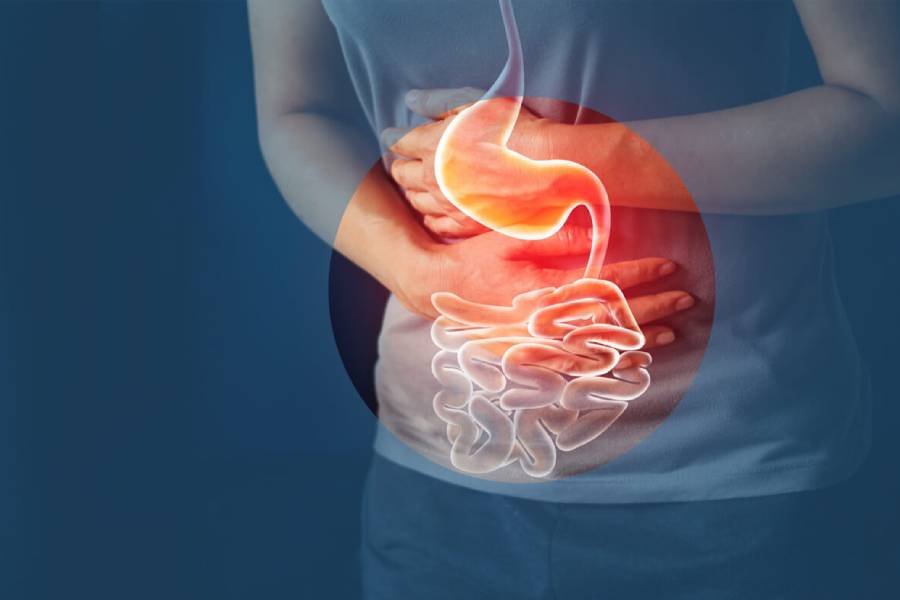- +919158050180 / +919518795469 / +91 20 4848 0322 Call Us Now
- info@precisionplushospitals.com Drop Us a Line
GI Disease Treatment
What are gastrointestinal diseases?

What are functional gastrointestinal diseases?
Functional diseases are those in which the GI tract looks normal when examined, but doesn’t move properly. They are the most common problems affecting the GI tract (including the colon and rectum). Constipation, irritable bowel syndrome (IBS), nausea, food poisoning, gas, bloating, GERD and diarrhea are common examples.
Many factors may upset your GI tract and its motility (ability to keep moving), including:
- Eating a diet low in fiber.
- Not getting enough exercise.
- Traveling or other changes in routine.
- Eating large amounts of dairy products.
- Stress.
- Resisting the urge to have a bowel movement, possibly because of hemorrhoids.
- Overusing anti-diarrheal medications that, over time, weaken the bowel muscle movements called motility.
- Taking antacid medicines containing calcium or aluminum.
- Taking certain medicines (especially antidepressants, iron pills and strong pain medicines such as narcotics).
- Pregnancy.
What are structural gastrointestinal diseases?
Constipation:
Constipation, which is a functional problem, makes it hard for you to have a bowel movement (or pass stools), the stools are infrequent (less than three times a week), or incomplete. Constipation is usually caused by inadequate “roughage” or fiber in your diet, or a disruption of your regular routine or diet.
Constipation causes you to strain during a bowel movement. It may cause small, hard stools and sometimes anal problems such as fissures and hemorrhoids. Constipation is rarely the sign that you have a more serious medical condition.
You can treat your constipation by:
- Increasing the amount of fiber and water to your diet.
- Exercising regularly and increasing the intensity of your exercises as tolerated.
- Moving your bowels when you have the urge (resisting the urge causes constipation).
If these treatment methods don’t work, laxatives can be added. Note that you should make sure you are up to date with your colon cancer screening. Always follow the instructions on the laxative medicine, as well as the advice of your healthcare provider.
Irritable bowel syndrome (IBS):
Irritable bowel syndrome (also called spastic colon, irritable colon, IBS, or nervous stomach) is a functional condition where your colon muscle contracts more or less often than “normal.” Certain foods, medicines and emotional stress are some factors that can trigger IBS.
Symptoms of IBS include:
- Abdominal pain and cramps.
- Excess gas.
- Bloating.
- Change in bowel habits such as harder, looser, or more urgent stools than normal.
- Alternating constipation and diarrhea.
Treatment includes:
- Avoiding excessive caffeine.
- Increasing fiber in your diet.
- Monitoring which foods trigger your IBS (and avoiding these foods).
- Minimizing stress or learning different ways to cope with stress.
- Taking medicines as prescribed by your healthcare provider.
- Avoiding dehydration, and hydrating well throughout the day.
- Getting high quality rest/sleep.
Hemorrhoids:
Hemorrhoids are dilated veins in the anal canal, structural disease. They’re swollen blood vessels that line your anal opening. They are caused by chronic excess pressure from straining during a bowel movement, persistent diarrhea, or pregnancy. There are two types of hemorrhoids: internal and external.
Internal hemorrhoids:
Internal hemorrhoids are blood vessels on the inside of your anal opening. When they fall down into the anus as a result of straining, they become irritated and start to bleed. Ultimately, internal hemorrhoids can fall down enough to prolapse (sink or stick) out of the anus.
Treatment includes:
- Improving bowel habits (such as avoiding constipation, not straining during bowel movements and moving your bowels when you have the urge).
- Your healthcare provider using ligating bands to eliminate the vessels.
- Your healthcare provider removing them surgically. Surgery is needed only for a small number of people with very large, painful and persistent hemorrhoids.
External hemorrhoids:
External hemorrhoids are veins that lie just under the skin on the outside of the anus. Sometimes, after straining, the external hemorrhoidal veins burst and a blood clots form under the skin. This very painful condition is called a “pile.”
Treatment includes removing the clot and vein under local anesthesia and/or removing the hemorrhoid itself.
Anal Fissures:
Anal fissures are also a structural disease. They are splits or cracks in the lining of your anal opening. The most common cause of an anal fissure is the passage of very hard or watery stools. The crack in the anal lining exposes the underlying muscles that control the passage of stool through the anus and out of the body. An anal fissure is one of the most painful problems because the exposed muscles become irritated from exposure to stool or air, and leads to intense burning pain, bleeding, or spasm after bowel movements.
Initial treatment for anal fissures includes pain medicine, dietary fiber to reduce the occurrence of large, bulky stools and sitz baths (sitting in a few inches of warm water). If these treatments don’t relieve your pain, surgery might be needed to repair the sphincter muscle.
Perianal abscesses:
Anal fistula:
An anal fistula – again, a structural disease – often follows drainage of an abscess and is an abnormal tube-like passageway from the anal canal to a hole in the skin near the opening of your anus. Body wastes traveling through your anal canal are diverted through this tiny channel and out through the skin, causing itching and irritation. Fistulas also cause drainage, pain and bleeding. They rarely heal by themselves and usually need surgery to drain the abscess and “close off” the fistula.
WhatsApp us
